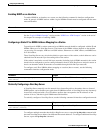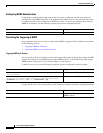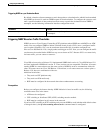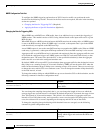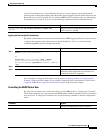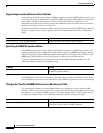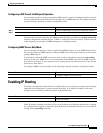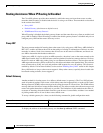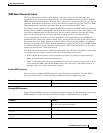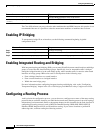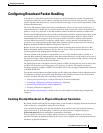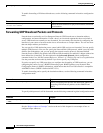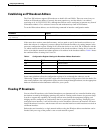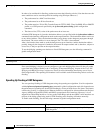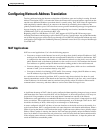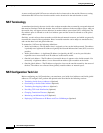
Configuring IP Addressing
Enabling IP Routing
IPC-29
Cisco IOS IP Configuration Guide
ICMP Router Discovery Protocol
The Cisco IOS software provides a third method, called router discovery, by which the router
dynamically learns about routes to other networks using the ICMP Router Discovery Protocol IRDP).
IRDP allows hosts to locate routers. When the device operates as a client, router discovery packets are
generated. When the device operates as a host, router discovery packets are received. The Cisco IRDP
implementation fully conforms to the router discovery protocol outlined in RFC 1256.
The software is also capable of wire-tapping Routing Information Protocol (RIP) and Interior Gateway
Routing Protocol (IGRP) routing updates and inferring the location of routers from those updates. The
client/server implementation of router discovery does not actually examine or store the full routing
tables sent by routing devices, it merely keeps track of which systems are sending such data.
You can configure the four protocols in any combination. We recommend that you use IRDP when
possible because it allows each router to specify both a priority and the time after which a device should
be assumed down if no further packets are received. Devices discovered using IGRP are assigned an
arbitrary priority of 60. Devices discovered through RIP are assigned a priority of 50. For IGRP and RIP,
the software attempts to measure the time between updates, and assumes that the device is down if no
updates are received for 2.5 times that interval.
Each device discovered becomes a candidate for the default router. The list of candidates is scanned and
a new highest-priority router is selected when any of the following events occurs:
• When a higher-priority router is discovered (the list of routers is polled at 5-minute intervals).
• When the current default router is declared down.
• When a TCP connection is about to time out because of excessive retransmissions. In this case, the
server flushes the ARP cache and the ICMP redirect cache, and picks a new default router in an
attempt to find a successful route to the destination.
Enabling IRDP Processing
Only one task for configuring IRDP routing on a specified interface is required. To enable IRDP
processing on an interface, use the following command in interface configuration mode:
Changing IRDP Parameters
When you enable IRDP processing, the default parameters will apply. To optionally change any of these
IRDP parameters, use the following commands in interface configuration mode, as needed:
Command Purpose
Router(config-if)# ip irdp
Enables IRDP processing on an interface.
Command Purpose
Router(config-if)# ip irdp multicast
Sends IRDP advertisements to the all-systems multicast address
(224.0.0.1) on a specified interface.
Router(config-if)# ip irdp holdtime seconds
Sets the IRDP period for which advertisements are valid.
Router(config-if)# ip irdp maxadvertinterval
seconds
Sets the IRDP maximum interval between advertisements.
Router(config-if)# ip irdp minadvertinterval
seconds
Sets the IRDP minimum interval between advertisements.



